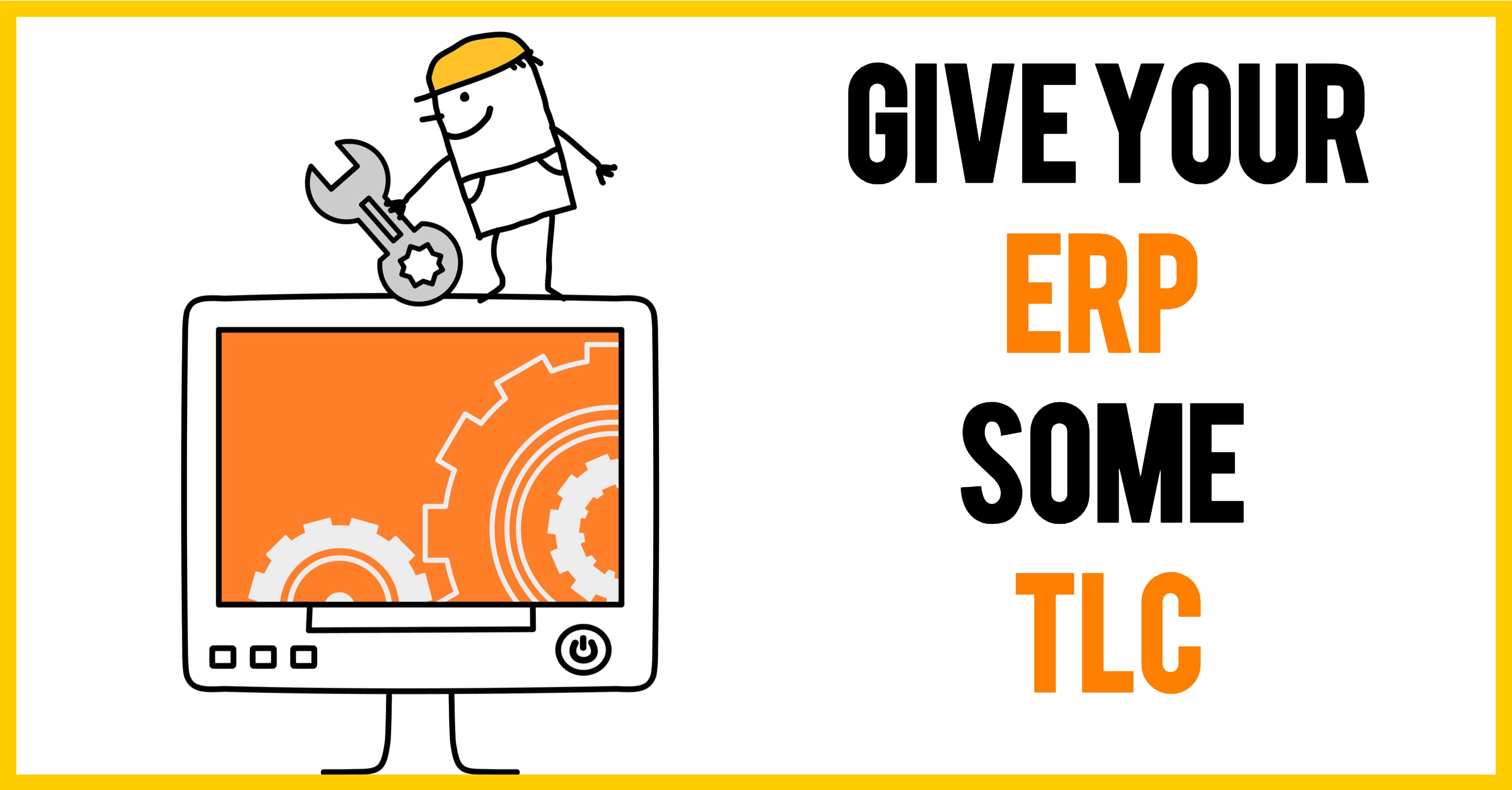Tips for ERP Upkeep
As we’ve established in several of our blog posts, implementing enterprise resource planning (ERP) software requires careful decision making and a commitment to following best practices. Businesses can’t forget to develop change management strategies, put together a project team, clean data, undergo business process modeling and execute a myriad of other procedures. Leaving any stone unturned could sacrifice your entire investment.
But when you complete all the necessary steps with the help of an ERP consultant, your company is rewarded with business process improvements and revenue-building opportunities that give you an edge over the competition. Well, that is, if you continue to take care of your ERP instance. See, ERP isn’t a one-and-done deal. Once it’s implemented, enterprises still need to give their software some nice, old-fashioned TLC. By making plans for continuous improvement and upkeep, manufacturers and distributors can reap amazing benefits from their ERP for years to come. Take a look at our tips to find out how:
Updates and Upgrades
Being constantly plugged in to our desktops or mobile devices, we all know the importance of updating and upgrading our technology to gain new features, receive technical support and prevent crashes and other annoying problems. The same goes for enterprise software. You should know which version you’re using as well as what the latest patches and versions are to ensure your system is up-to-date.
Let’s clarify the difference between updates and upgrades. Software updates (or patches) are provided periodically to protect your data against new-found security risks, improve performance, fix bugs and introduce features. Upgrades are new software versions which offer more significant improvements. Epicor 10, for example, includes large-scale changes from Epicor 9, such as stronger business architecture, improved reporting and added modules and functions.
Enterprises probably shouldn’t undergo upgrades as each new version comes out, but waiting too long to upgrade your software will undoubtedly result in downtime and insufficient support from vendors. Businesses, therefore, should carefully weigh the pros and cons before moving up from their current version. Cloud ERP users have an advantage when it comes to updates and upgrades, as these can occur quickly with little to no work on the user’s end. On-premises ERP, however, requires more intensive work as well as hardware upgrades.
Maintenance and Disaster Recovery Plans
As the backbone of your business, your ERP system needs to be protected from disaster. Performing regular maintenance and developing a plan for disaster recovery offer the insurance you need to keep your instance fully functioning.
A critical part of your maintenance plan is the backup schedule. Backups should occur regularly to enable databases and files to be recovered in the event that they are lost or corrupted. But the frequency of backups depends on your specific business needs. For example, while some businesses can safely perform backups once a month, others process so many transactions on a daily basis that they require more frequent backups. Consider what information you need at all times to build an appropriate backup and recovery plan. Document this plan, and periodically test it to check that it works as intended. Additionally, sign on to a maintenance plan with ERP vendors or find a consultant that offers comprehensive error handling and system monitoring to receive extra protection and delegate most of the upkeep responsibility to software experts.
Ongoing Training
Over time, your business and your business systems undergo significant changes. To ensure maximum ERP usage throughout these developments, training should occur on an ongoing basis, particularly after executing upgrades. This gives new users a chance to learn more about the platform and existing users knowledge about the latest improvements. It also provides an opportunity to check in and see if users are taking advantage of sophisticated tools to gain optimal insight from data. As company procedures and ERP instances change, update training and use case documentation so it continues to align with business needs.
Wrap Up
ERP best practices don’t just cover the initial implementation. To keep your ERP performing optimally for several years, it’s important to ensure your system is up-to-date and design plans for continued maintenance and training.
But this doesn’t have to put strain on your IT team. A continuous improvement plan (CIP) puts the upkeep and improvement of your ERP instance in the hands of Datix’s expert consultants. Our ongoing service plans include an array of offerings, such as server monitoring, scheduled follow-ups, system audits, customizations and more. An Epicor Platinum Partner, Datix is the most trusted source to take charge of ERP solutions and services from start to finish. For even greater business improvements, we also built Unity, a pre-built integration platform that connects Epicor ERP with your choice of software to streamline processes.
Get the most from your software investment. Reach out to Datix’s premier ERP consultants today!
{{cta(‘770c1544-d87d-4acb-9fc4-7a25e1385094′,’justifycenter’)}}


